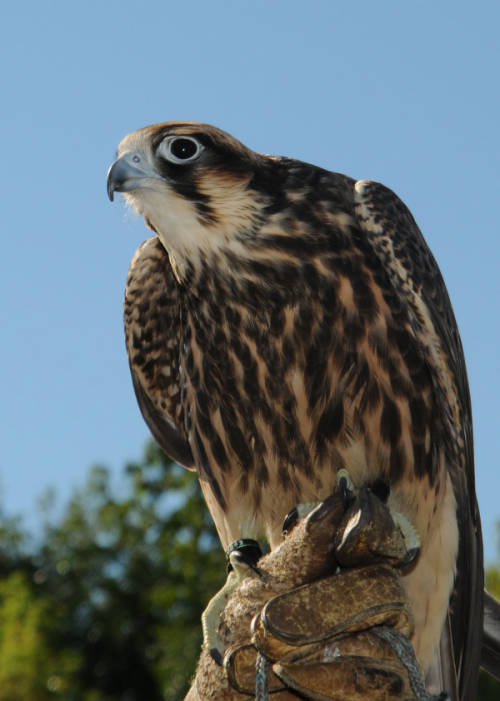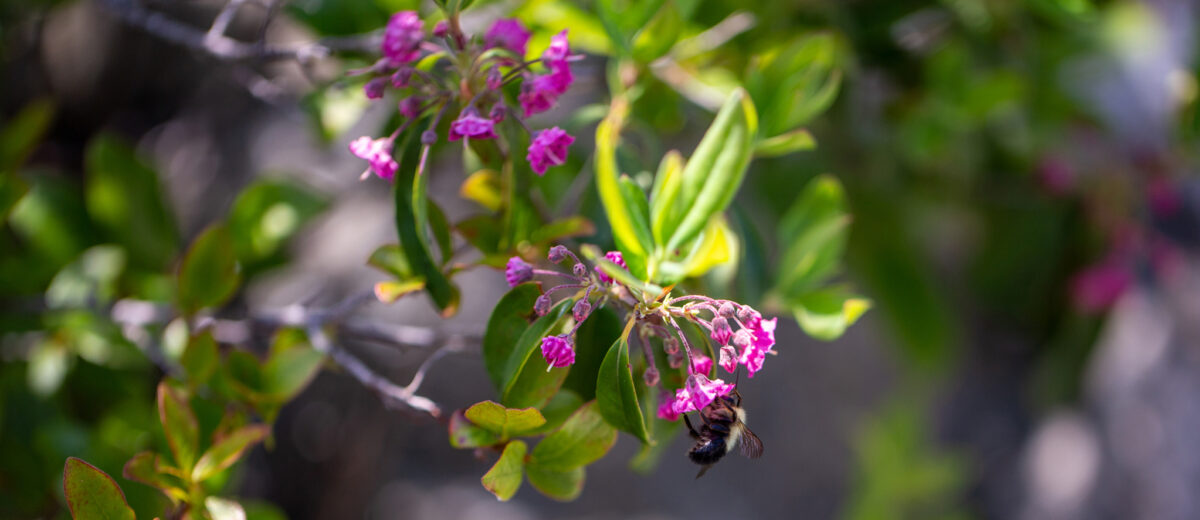by Trevor Grandin
World Migratory Bird Day marks the ceremonial return of birds to their respective regions during spring and fall migrations. Spring bird migration is a time when people in Central and South America bid farewell to their winter visitors, and those in the United States and Canada greet their new summer companions. World Migratory Bird Day is celebrated on the second Saturday of May (May 11, 2024) for the US and Canada and the second Saturday of October in Mexico, Central and South America, and the Caribbean (October 12, 2024).
The 2024 focus is insects! Insects are very important to birds, with the timing of many bird migrations often coinciding with peak insect abundance at stopover locations. As spring migration beckons millions of birds back up north, projects and initiatives are underway here in Acadia National Park to track and understand these seasonal neighbors.

Peregrine falcons are adept predators that can attack prey at speeds of more than 100 miles per hour. The falcons travel immense distances during their migration periods with arctic breeders making the journey from South America to the northern tundras of Canada. The name “peregrine” derives from the Latin term peregrinus meaning “traveler” or “wanderer.”
Peregrine falcon reproduction and survival rates were hard-hit by the use of harmful pesticides, leading to large population declines. By the mid-1960s, researchers concluded that the falcons were no longer a breeding species in the eastern United States, including Acadia National Park, leading to federal classification as an endangered species in 1973.
Captive breeding programs that allowed specialists to monitor and raise fledglings led to a successful, wild nesting at Acadia in 1991, the first in 35 years. Each year since, at least one pair has reproduced, with more than 160 chicks hatched. Successful repopulation programs led to the peregrine falcon’s removal from the Endangered Species List in 1999. Falcons incubate their eggs through April and May with chicks developing downy-white feathers in June. Trails through cliffside nesting areas are closed annually (Learn more about the successful effort to reintroduce peregrine falcons into Acadia National Park here.)
Birds are often known as a sentinel species, an organism whose behavior can alert the wider community to changes in the environment. On a micro level, think of the canary in the coal mine. Domestic canaries were often brought into coal mines for carbon monoxide detection; if the canary died, the miners knew they were in danger too. On a macro scale, the mass population decline of many bird species – including the peregrine falcon – led many nations to reevaluate the use of harmful pesticides like DDT.
DDT was used widely after WWII and viewed as a wonder chemical for agriculture and public health. Its staying-power was lauded by farmers, but it also allowed the harmful chemical to make its way up the food chain from insects and worms to apex predators like falcons and eagles. The consumption of pesticide-riddled prey causes the concentration of DDT to skyrocket within a bird’s body. Even if the chemical doesn’t kill the bird immediately, high DDT levels can cause a bird to lay eggs with thin and brittle shells, leading to higher rates of destruction during the incubation process. This led the United States to ban the use of DDT in 1972.
The relationship between insects and birds is tightly intertwined. A lack or overabundance of one species can cause the population pendulum to swing back and forth in erratic ways. Losses in insect populations by intensive agriculture or urban development can create energy deficits for migrating birds. A lack of energy or protein leads to weakened immune-systems, lower reproductive success, and increases in migration mortality. Birds play an important role in pest control and a decrease in birds one season can lead to an overpopulation of insects the next, raising the risk of agricultural damage. The health of one species begets the health of others, emphasizing the need to safeguard these sentinel species.
Other bird monitoring programs need assistance from the public and helping track birds in Acadia is as easy as downloading an app: eBird is an online database used by anyone with a knack for birds to chronicle the feathered friends around them. Submitted observations are used by scientists and researchers to evaluate bird populations and trends. Checklists for specific locations within the Schoodic Peninsula, including Frazer Point and Schoodic Point, and across Acadia National Park are updated daily by bird enthusiasts. As of publication, 1,356 checklists have been completed for Frazer Point’s eBird site with 183 species seen.
Throughout bird’s migration, they rely on insects that are declining in many areas as specialized habitats, like wetlands and grasslands, are altered by humans to accommodate agricultural and economic development. The Status and Trends of Wetlands survey, conducted by the U.S. Fish and Wildlife Service, tracks changes in wetland area from 2009 to 2019 and found a 50 percent increase in habitat loss within those ten years.
Over 20 percent of Acadia National Park is classified as wetlands and these federally protected lands provide integral nourishment for migrating birds. They create important habitats for insects, with iNaturalist contributors identifying more than 400 species in and around Great Meadow. Although these wetlands are important food sources for birds migrating through the northeast, Acadia’s protected land is a fraction of the larger system utilized by these avians and that system is shrinking everyday.
For many, spring represents renewal and reawakening. A time when Vitamin D is an abundant resource and every plan is made to maximize outdoor exposure. While some of us humans are deciding how we’ll spend our summer months, millions of birds are making thousand-mile journeys. Every day is a day to celebrate birds but World Migratory Bird Day underscores the need to take active conservation measures to support birds, insects, and other wildlife.

